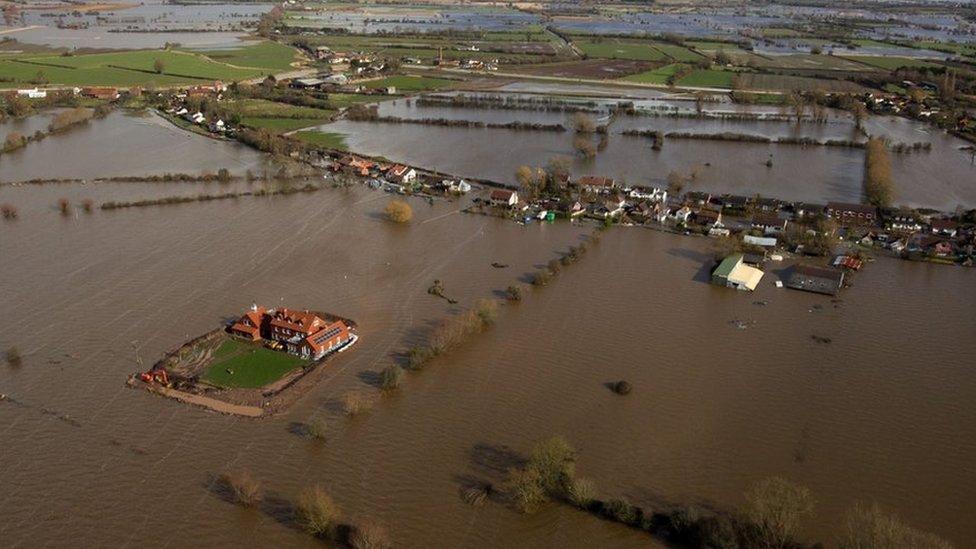Devastating flooding 'unlikely' thanks to dredging
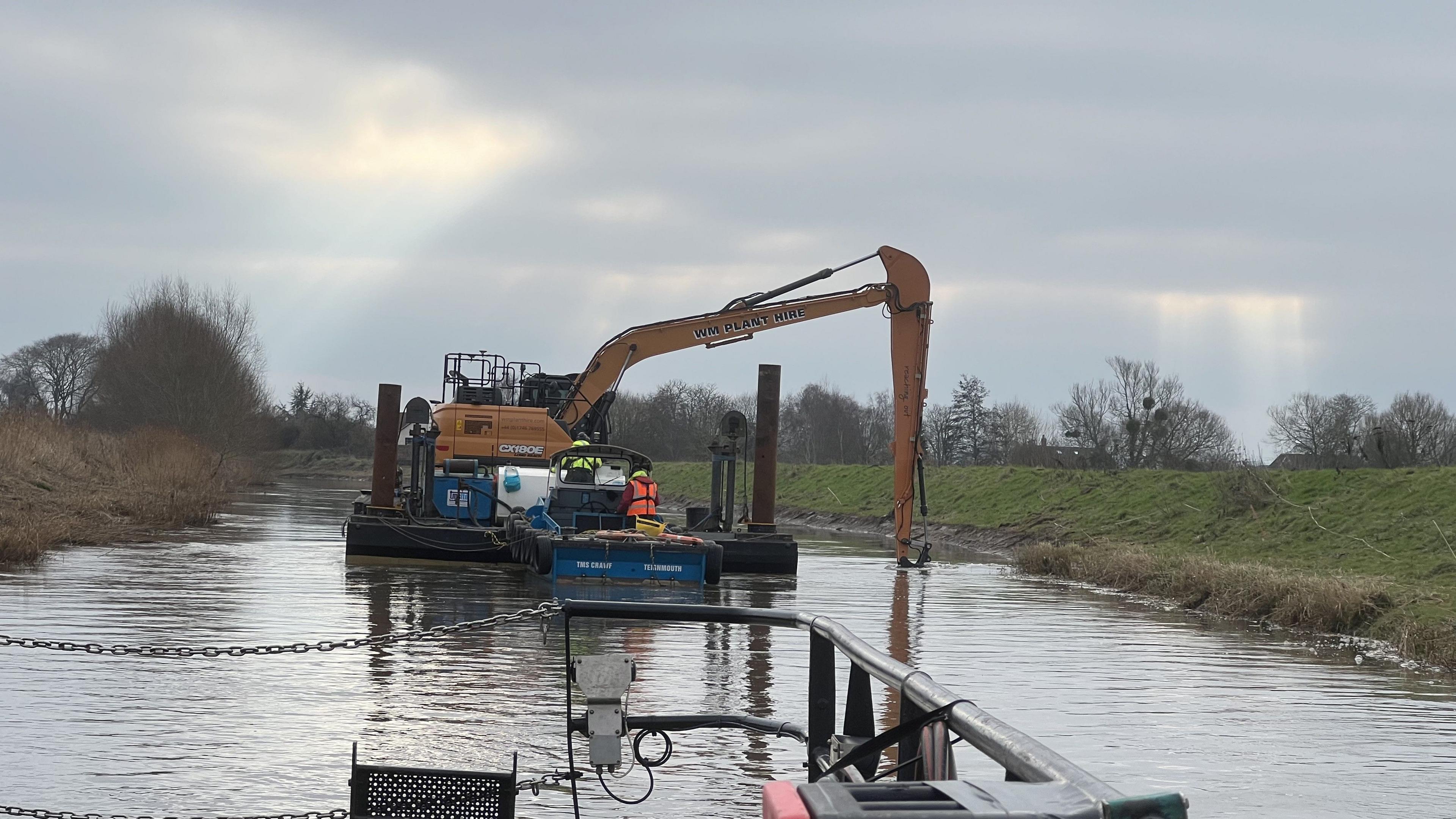
Dredging in Somerset involves scraping the banks clear of silt
- Published
Dredging along a key waterway has reduced the impact of future flooding, according to a river authority.
The Somerset Rivers Authority was set up in the aftermath of widespread flooding in 2014, which cut off a number of villages and damaged homes.
Computer modelling shows that dredging is working, according to the river authority, which is now trialling water injection treatment.
The work is carried out in December and January and involves scraping the banks of silt, injecting water directly into the river bed and washing the silt out to sea.
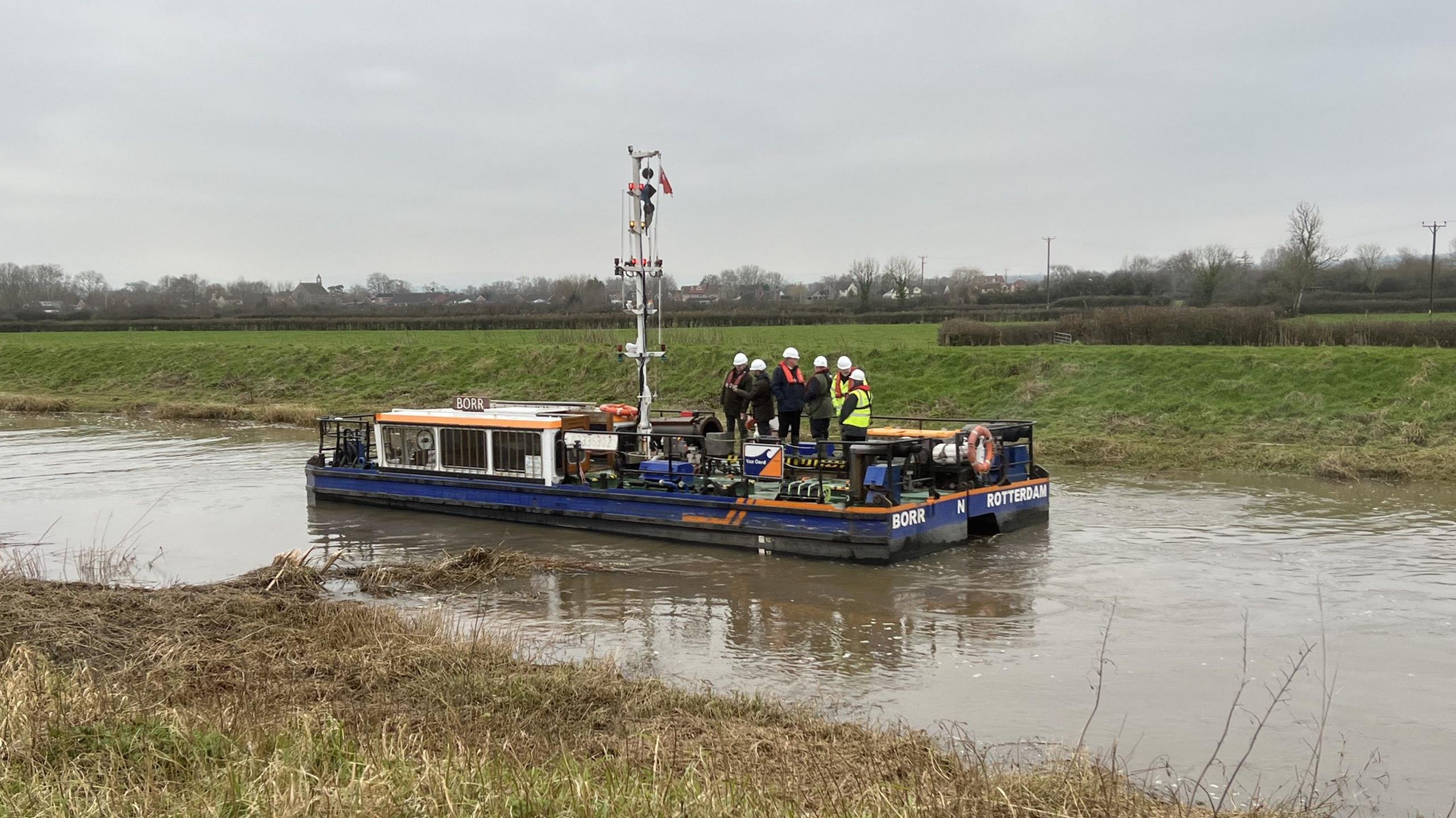
The Somerset River Authority claims dredging is having successes
In 2014, Somerset suffered unprecedented flooding.
More than 25 sq miles of Somerset was under of floodwater, and hundreds of homes were flooded.
The village of Muchelney suffered the brunt of it, with much of it submerged - prompting visits from the Prince of Wales, now King Charles, and prime minister at the time David Cameron.
Chair of the river authority Mike Stanton said the 2014 floods are "unlikely to happen again" as a direct result of what it has done.
The authority receives funding through council tax precepts and external grants to carry out flood prevention work.
Tony Bradford, the chair of the Parrett Internal Drainage Board, said the "vital" work they do keeps villages, such as Moorland, safe, and gives people confidence they will be free from future flooding.
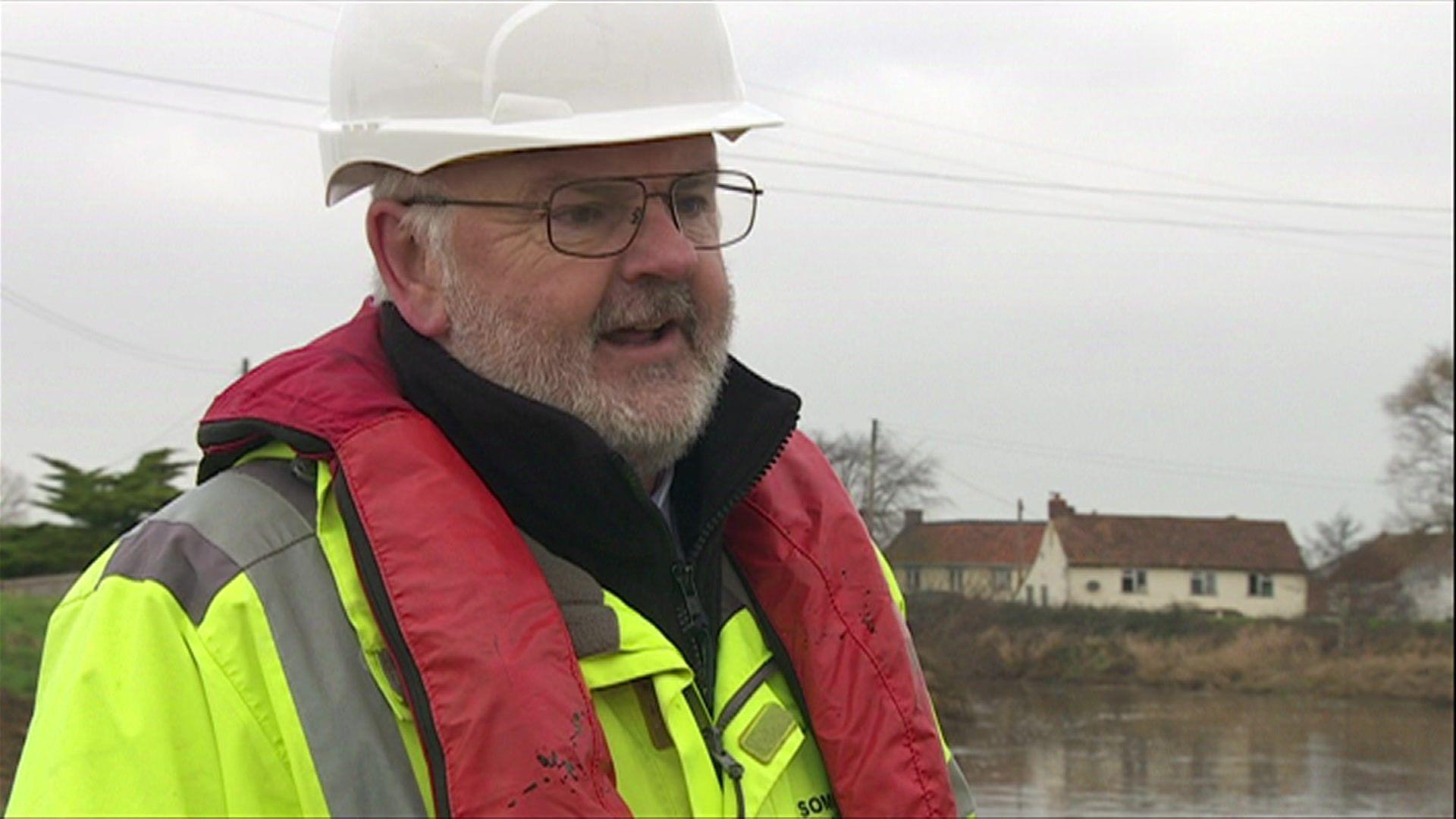
Iain Sturdy said the work is financially and economically important
Iain Sturdy, who is the chair of The Somerset Drainage Boards Consortium, which brings together local groups, said the amount of sediment that comes in from the Severn Estuary every year is "phenomenal".
"If we were to haul that around the county and find places to dispose of it, the costs and the carbon footprint is huge, so this is a saving in many ways," he added.
"If we fail to do these things, flood risk will increase, and it is about doing the most important jobs in the most important areas... but there will always be high flows.
"As a result of this work, the likelihood, or the severity of flooding that will arise from the River Parrett, is far less than it would otherwise have been," he explained.
Follow BBC Somerset on Facebook, external and X, external. Send your story ideas to us on email or via WhatsApp on 0800 313 4630.
Related topics
- Published6 February 2024
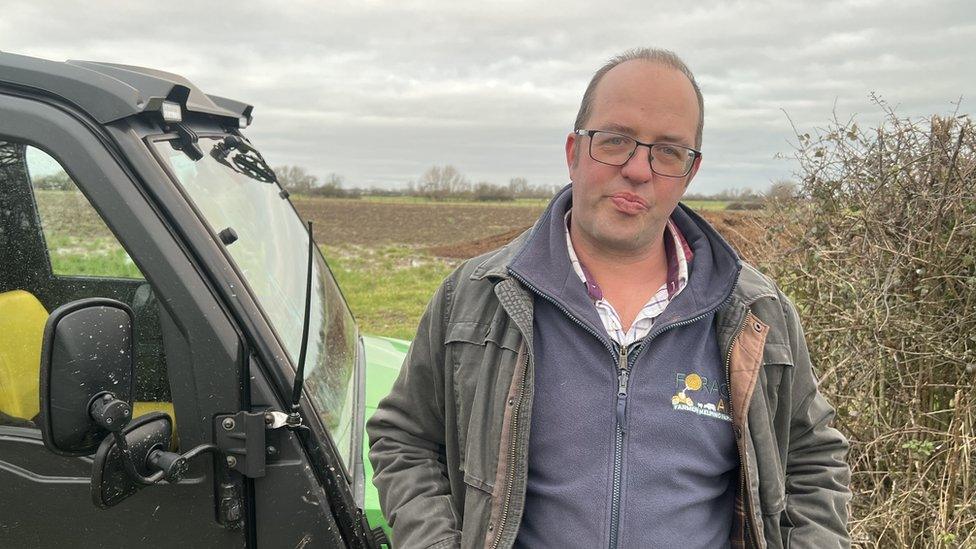
- Published5 February 2024
